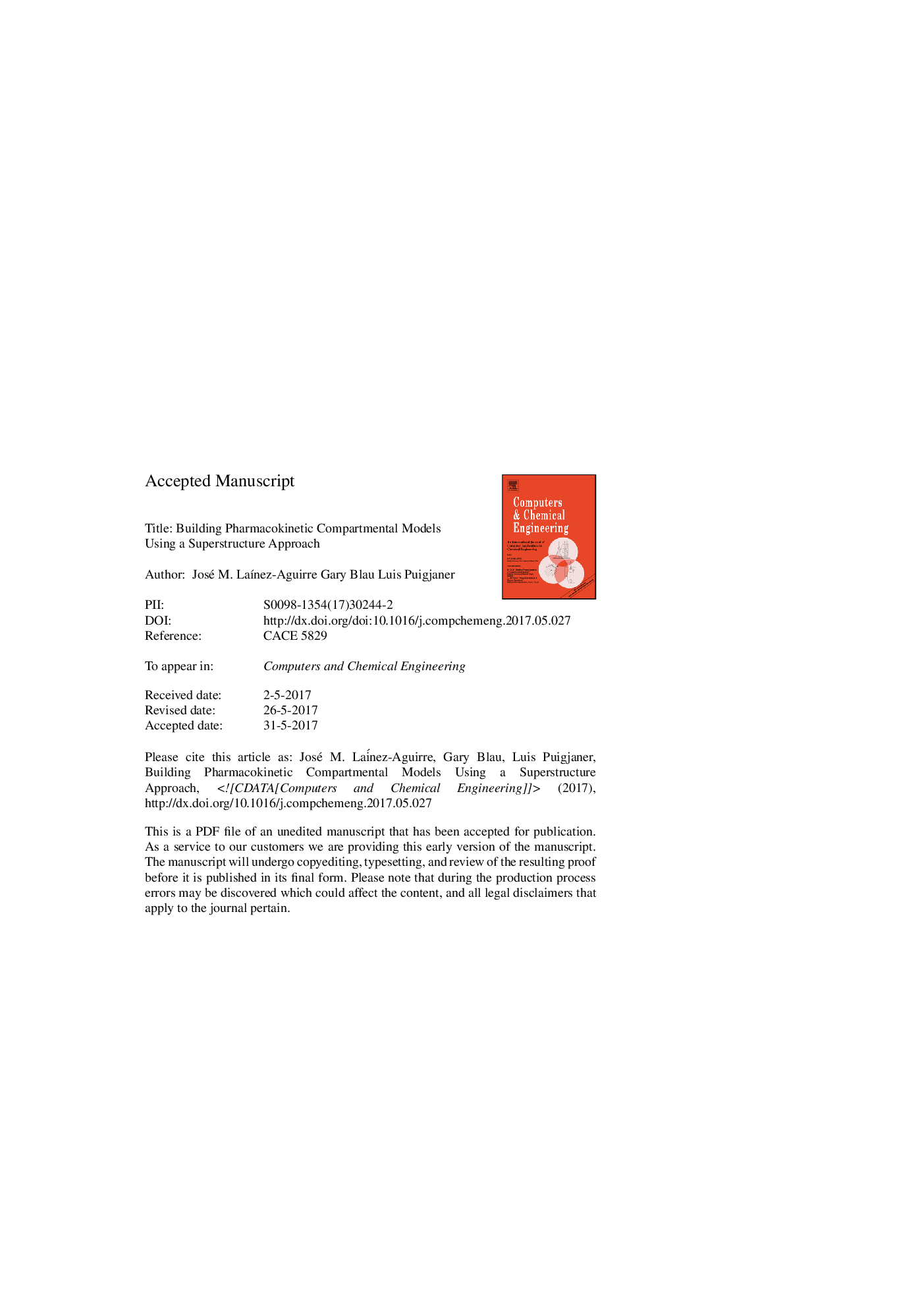| Article ID | Journal | Published Year | Pages | File Type |
|---|---|---|---|---|
| 6595074 | Computers & Chemical Engineering | 2017 | 28 Pages |
Abstract
An optimization framework is presented to support the model builder in elucidating compartmental models that plausibly describe data obtained during experimentation. Here, one specifies a priori the maximum number of compartments and type of flows to contemplate during the optimization. The mathematical model follows a 'superstructure' approach, which inherently considers the different feasible flows between any pair of compartments. The model activates those flows/compartments that provide the optimal fit for a given set of experimental data. A regularized log-likelihood function is formulated as the performance metric. To deal with the resulting set of differential equations orthogonal collocation on finite elements is employed. A case study related to pharmacokinetics of an oncological agent demonstrates the advantages and limitations of the proposed approach. Numerical results show that the proposed approach can provide 33% smaller mean square prediction error in comparison with a compartmental model previously suggested in the literature.
Related Topics
Physical Sciences and Engineering
Chemical Engineering
Chemical Engineering (General)
Authors
José M. LaÃnez-Aguirre, Gary Blau, Luis Puigjaner,
